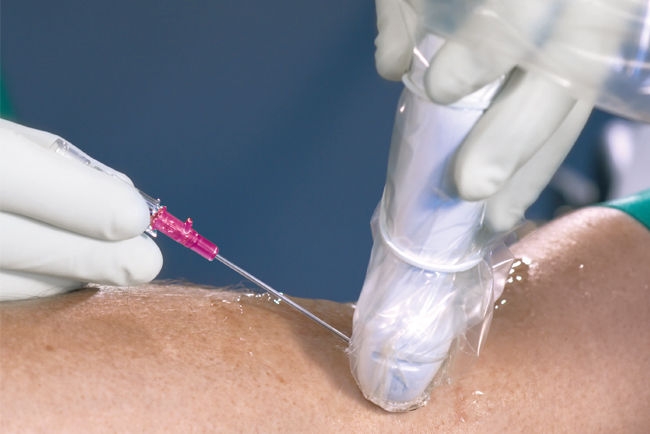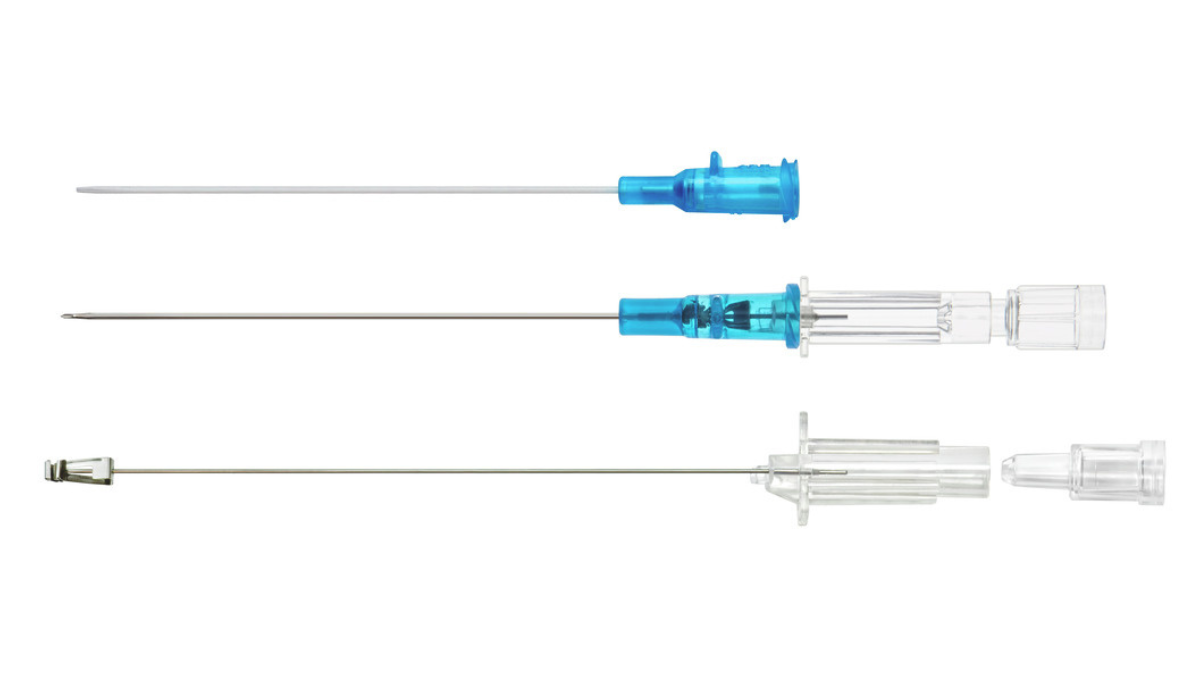No content results match your keyword.
Content
You have successfully logged out.
Not registered yet?
Peripheral IV Catheter
Introcan Safety® Deep Access is a longer IV catheter designed for ultrasound-guided insertion into deeper veins, often needed for patients with difficult venous access. Short IV catheters have been associated with complications such as dislodgement leading to extravasation or infiltration. Introcan Safety® Deep Access allows more catheter to reside in the vessel helping to reduce the risk of those complications. It is an alternative to multiple short length peripheral IV catheters which don’t last the required duration of therapy or, is a simpler to insert, cost-effective alternative to a midline catheter.

First-stick cannulation success rate
0%
Duration of therapy
0%
Dwell time of between 1 and 10 days
0%

Improves the likelihood of achieving at least two-thirds of the catheter in the vein supporting optimal survival
/
Magnified flashback chamber. Enabling ease of verification of being in the vein
/
Passive safety needle shield. Aids in the prevention of needlestick injuries
/
In Patients with Difficult Venous Access
Cost saving per patient
£ 0
Consumable waste saving per patient
0kg
Common reasons for failure include the catheter becoming dislodged, infiltration or extravasation, or phlebitis.
Patients with difficult venous access such as those with a high BMI, small or damaged veins, cancer patients, or people with a history of IV drug use are more likely to experience catheter failure.
Repeated failed cannulation attempts can have a significant impact on patients, healthcare resources and financial costs. For patients, each unsuccessful attempt not only causes additional pain but also increases the risk of infection. From a clinical perspective, repeated failures consume valuable time and resources. If reliable vascular access cannot be established with a short IV catheter, clinicians may be forced to resort to more invasive, time-consuming and expensive alternatives.
Longer length inserted under ultrasound guidance
Emily Smith, Vascular Access Lead Nurse, Aintree Hospital & Valentin Irimia, Clinical Interventions Nurse Specialist, Clatterbridge Cancer Centre Liverpool
pdf, 118.2 KB
Longer length in sickle cell treatment
Jenniferth Aviles - Homerton University Hospital NHS Foundation Trust
pdf, 448.8 KB
Ultrasound guided longer length PIVCs improve patient outcomes
Julie Godfrey & Luigi Gallipoli - Mid and South Essex NHS Foundation Trust
pdf, 765.1 KB
Longer length PIVCs in DVA patients
David Wynne - Wirrral University Teaching Hospital NHS Foundation Trust
pdf, 369.0 KB
Association of Anaesthetists Guidelines
Safe vascular access 2025
link
Health Technology Wales
Long length peripheral intravenous catheters
link
Infiltration and Extravasation
A toolkit to improve practice National Infusion and Vascular Access Society, (NIVAS) 2024
link
Emily Smith, Liverpool University Hospitals NHS Foundation Trust
Julie Godfrey, Mid and South Essex NHS Foundation Trust
Please complete the form below to request samples of Introcan Safety® Deep Access or to request support from our Clinical Therapy Specialist team
References:
(1) Helm RE, Klausner JD, Klemperer JD, Flint LM, Huang E. Accepted but unacceptable: peripheral IV catheter failure. J Infus Nurs. 2015 May-Jun;38(3):189-203. doi: 10.1097/NAN0000000000000100. PMID: 25871866
(2) Lee Steere, Cheryl Ficara, Michael Davis, Nancy Moureau; Reaching One Peripheral Intravenous Catheter (PIVC) Per Patient Visit With Lean Multimodal Strategy: the PIV5Rights™ Bundle. Journal of the Association for Vascular Access 1 September 2019; 24(3):31-43. doi: https://doi.org/10.2309/j.java.2019.003.004